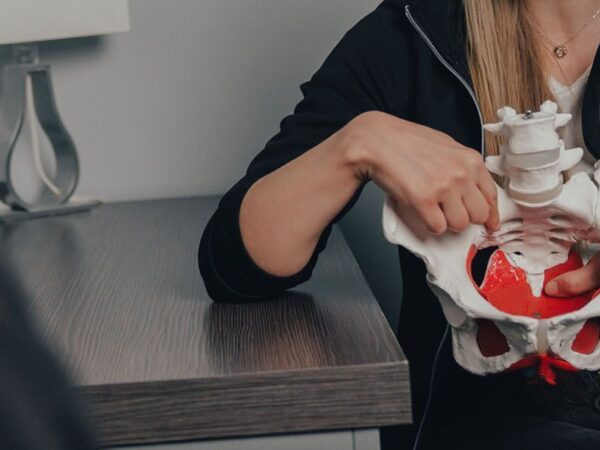Qu’est-ce que la fracture du poignet ?
- Femme post-ménopause avec ostéoporose, chute sur la main en extension du poignet.
- Jeune avec traumatisme à haute vélocité (sport, accident de véhicule motorisé).
Signes et symptômes
- Douleur au poignet et aux doigts.
- Œdème prononcé.
- Déformation palpable et/ou visible au poignet.
- Perte de mobilité active et passive au poignet.
- Perte de force musculaire au poignet, aux doigts et à la préhension.
Selon la gravité de la fracture et du déplacement des os, une immobilisation avec ou sans intervention chirurgicale sera nécessaire.
Plusieurs structures se retrouvent dans la région du poignet, dont plusieurs tendons, ligaments et nerfs. Ainsi, ces structures peuvent être également affectées et peuvent entraîner des complications.
Complications possibles les plus fréquentes
- Neuropathie périphérique (atteinte surtout du nerf médian).
- Arthrose du poignet.
- Syndrome douloureux régional complexe ou syndrome épaule-main.
- Rupture tendineuse.
- Raideur des doigts.
- Capsulite de l’épaule (par immobilisation du bras).
- Diminution de mobilité persistante limitant le retour à la fonction normale du poignet.
Interventions en physiothérapie
Diminution de la douleur et de l’œdème
- Modalités électrothérapeutiques (TENS).
- Bain contraste (chaud-froid).
- Glace.
- Bain de paraffine.
- Conseils sur la gestion de la douleur et de l’oedème.
Augmentation de la mobilité du poignet
- Mobilisations articulaires.
- Techniques de tissus mous.
- Prescription d’exercices actifs, actifs-assistés et passifs.
Augmentation de la force du poignet
Prescription d’exercices de renforcement progressif.
Retour à la fonction
- Pratique d’exercices fonctionnels (ex: dévisser couvercle, attacher boutons).
- Conseils sur l’usage du membre supérieur.
La littérature scientifique démontre qu’une prise en charge rapide auprès d’un physiothérapeute suite à la consolidation des os est efficace et permet un meilleur retour à la fonction et la prévention de certaines complications.4
Références
1. Goldfarb CA, Yin Y, Gilula LA, Fisher AJ, Boyer MI. Wrist fractures: what the clinician wants to know. Radiology. 2001;219(1):11-28. 2. Brogren E, Hofer M, Petranek M, Dahlin LB, Atroshi I. Fractures of the distal radius in women aged 50 to 75 years: natural course of patient-reported outcome, wrist motion and grip strength between 1 year and 2–4 years after fracture. Journal of Hand Surgery (European Volume). 2011;36(7):568-76. 3. Cooney WP, Doybins JH, Linscheid RL. Complications of Colles’ Fracture. The Journal of Bone and Joint Surgery. 1980;62(4):613-617. 4. Watt CF, Taylor NF, Baskus K. Do Colles’ fracture patients benefit from routine referral to physiotherapy following cast removal? Arch Orthop Trauma Surg. 2000;120:413-415. 5. Bruder AM, Taylor NF, Dodd KJ, Shields N. Physiotherapy intervention practice patterns used in rehabilitation after distal radial fracture. Physiotherapy. 2013;99(3):233-40.



